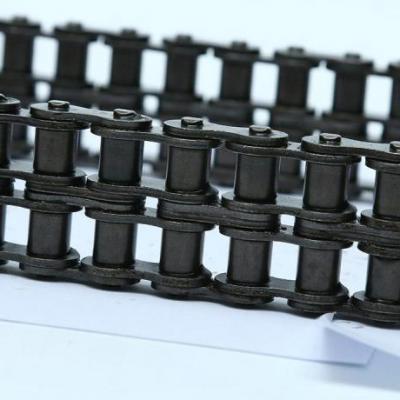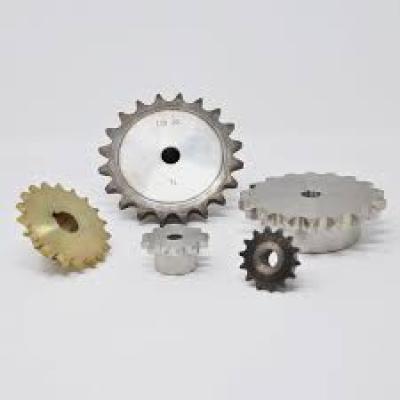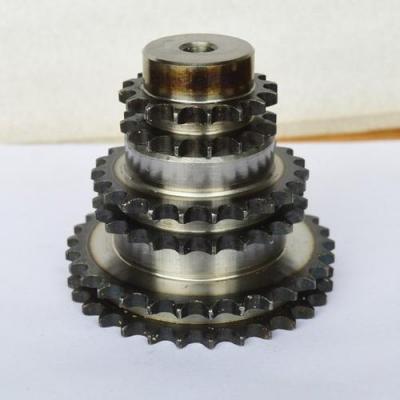Brief analysis of the difference between sprocket and chain
The sprocket is driven by a chain, and the model unit is generally English. There are single row, double row and multiple rows. Suitable for low speed, heavy load and high temperature conditions. Compared with Gears, it can be used where the centers of the two shafts are far away. Gears are driven by meshing with each other, and the model unit is mostly metric, expressed by modulus. The power and speed range of the transmission is large. The compact structure can realize larger transmission ratio, non-standard gears, high efficiency and long service life.
The main differences between gears and sprockets are:
1. The gear has an involute tooth profile, while the sprocket has a "three-arc straight line" tooth profile.
2. The gear can realize the transmission between parallel shafts and any interleaved shafts, while the sprocket can only realize the transmission between parallel shafts.
3. The gear transmission structure is compact, and the sprocket can realize long-distance transmission.
4. The gear is driven by the meshing of the teeth of the two gears, and the transmission between the two sprockets is realized by the chain.
6. The torque transmitted by the gear is larger than the sprocket.
7. Gear processing accuracy and installation cost are higher than sprocket.
8. Chain transmission is suitable for transmission with large center distance, and has the characteristics of light weight and low cost;
9. The machining accuracy and installation accuracy of the chain and sprocket and the accuracy of the center distance in the chain drive are lower than the gear requirements. It is easier to install and maintain the existing chain drive by changing its parameters (transmission ratio, center distance, etc.) easy and convenient;
10. Under normal circumstances, the chain drive has the characteristics of higher sprocket gear teeth and the chain participating in the meshing at the same time, and the sprocket tooth groove arc is large, and the gear stress concentration is small. Therefore, the chain drive has a larger load-bearing capacity. The tooth surface wear is relatively light;
11. Because the chain has better elasticity, and each hinge part of the chain can store lubricating oil, it has better cushioning capacity and vibration-absorbing capacity compared with rigid contact gear teeth;
12. When the transmission capacity is limited by space, the center distance is required to be small, the instantaneous transmission ratio is required to be constant, or the transmission ratio is too large, the speed is extremely high, and the noise is low, the performance of chain transmission is not as good as gear transmission.





